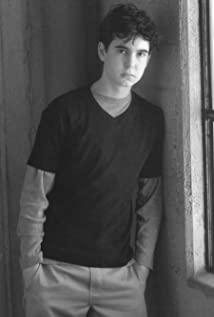It’s a pity that the picture can’t be posted.) The
film’s remarkable artistic imitations are at least pointed out by fans. The famous work "Shark" by Damien Hirst, the most popular installation artist in Britain. Another example is the scene of a woman being abused in the film. The girl has handcuffs tied to her neck and hands, and the girl stands in a posture that mimics the sculpture "Ballet dancer" by Degas.
Movie clip: The
first shocking scene is the moment when Edward, a little boy, has his face deformed.
Imitating works of art:
Similar to Li Xiaojing’s photographs.
Movie fragment:
In Carl’s dream, Catherine talks to the "good" Carl in her childhood for the first time. Catherine is stroking the beautiful horse standing in the middle of the room. Suddenly the glass slices placed in the ceiling were cut into sections and separated. The horse's heart was even beating.
Imitating works of art:
The most popular installation artist in Britain, Damien Hirst (Damien Hirst)'s 1996 installation art work "Some Comfort Gained from the Acceptance of the Inherent Lies in Everything". In his works, some animals are often dissected and immersed in formalin aquariums. In this work, two cows are staggered and juxtaposed after amputation.
Movie clip:
Catherine enters Carl's inner world and is unfortunately stunned by a strong weird woman who carries her on her back and passes through the room where Carl's victims-the corpse made into a puppet, Carl's "artwork"-are displayed. A picture of a woman being abused, with chains tied to her neck and hands.
Imitating works of art:
the wax sculpture "Fourteen-year-old Ballerina" by the famous French painter and sculptor Edgar Degas
Movie clip:
Federal Detective Peter Nova follows Catherine into Carl's inner world. As soon as he falls in, he sees the picture in the picture. Three strange women with short hair opened their mouths and looked towards the sky. When they saw Peter, they turned their heads and said some strange words to him, and then immediately turned back and continued to look towards the sky. Very weird picture. Imitated
works of art:
oil painting by Norwegian painter Odd Nerdrum. Dawn
movie fragment:
Catherine found little Karl in a tall house, and little Karl ran on the high stairs in fear.
Imitating works of art:
Schacht, an oil painting by Swiss surrealist artist HR Giger.
In addition:
Catherine watched the animation on TV on the bed at home, which was also an experimental animation work.
There must be many more fragments of this kind. Since my knowledge of art works is still limited, I can't list them one by one. Some people may say this is plagiarism, but I think the director just borrowed other art forms (oil paintings, sculptures, installation works) very well to describe the essence of the movie plot in a dynamic film form. In any case, turning static works of art into dynamic movies is a very interesting attempt in itself. From the several imitation examples I have listed above, it can be seen that the objects imitated by the director are almost all surrealist works, except for Degas’s sculptures (and transforming a classic work into a deformed image of being abused in a perverted mind. Isn’t it a surreal change?), the reason for choosing surrealism is related to the director’s personal hobbies. On the other hand, I think that surrealism can better express human psychology: that illusory world. What's more, the spiritual world of a psychopath in the film.
Human beings have never stopped exploring themselves. There are still many unknowns in the research of brain and neurology. Such unknowns also provide artists with enough imagination space and stage. Therefore, whenever a new kind of The theory of brain science or the proposal of new mental and neurological concepts is not only an event in the category of life sciences, but also a social and humanistic phenomenon. Many mainstream views of contemporary cultural thoughts are found in Freud's "Psychoanalysis", an Austrian psychiatrist, and his famous academic work "Analysis of Dreams". It can be said that the artistic development of the human mind often draws on the academic viewpoints of the Buddha, including the famous Hitchcock who could not wait to work with the surrealist painter Dali who was deeply influenced by the theory of "psychoanalysis" after the war. Lloyd’s point of view shot his famous "Doctor Edward", and a large number of Heath’s films later reflected similar themes, such as the famous "Mentally Ill", "Dizziness", "Rear Window", etc., all hidden The fashionable view of contemporary psychology. "Invasion of Brain Cells" is another fashionable work that has explored psychological issues in recent years. It describes some subconscious elements of human thinking with its shocking expressions and eye-catching images. It is not so much the film. A commercial entertainment film packaged with criminal themes is rather a concrete manifestation of the most terrifying scene in the inner world of people. Although this film is regarded by many media as a vainly fashionable gadget, it is undeniable that the visual effects created by the famous director Tason Singer who played MTV for this film are definitely worth the price. Yes, this is also the best skill of MTV and commercial film directors who take visual effects as their responsibility.
View more about The Cell reviews











